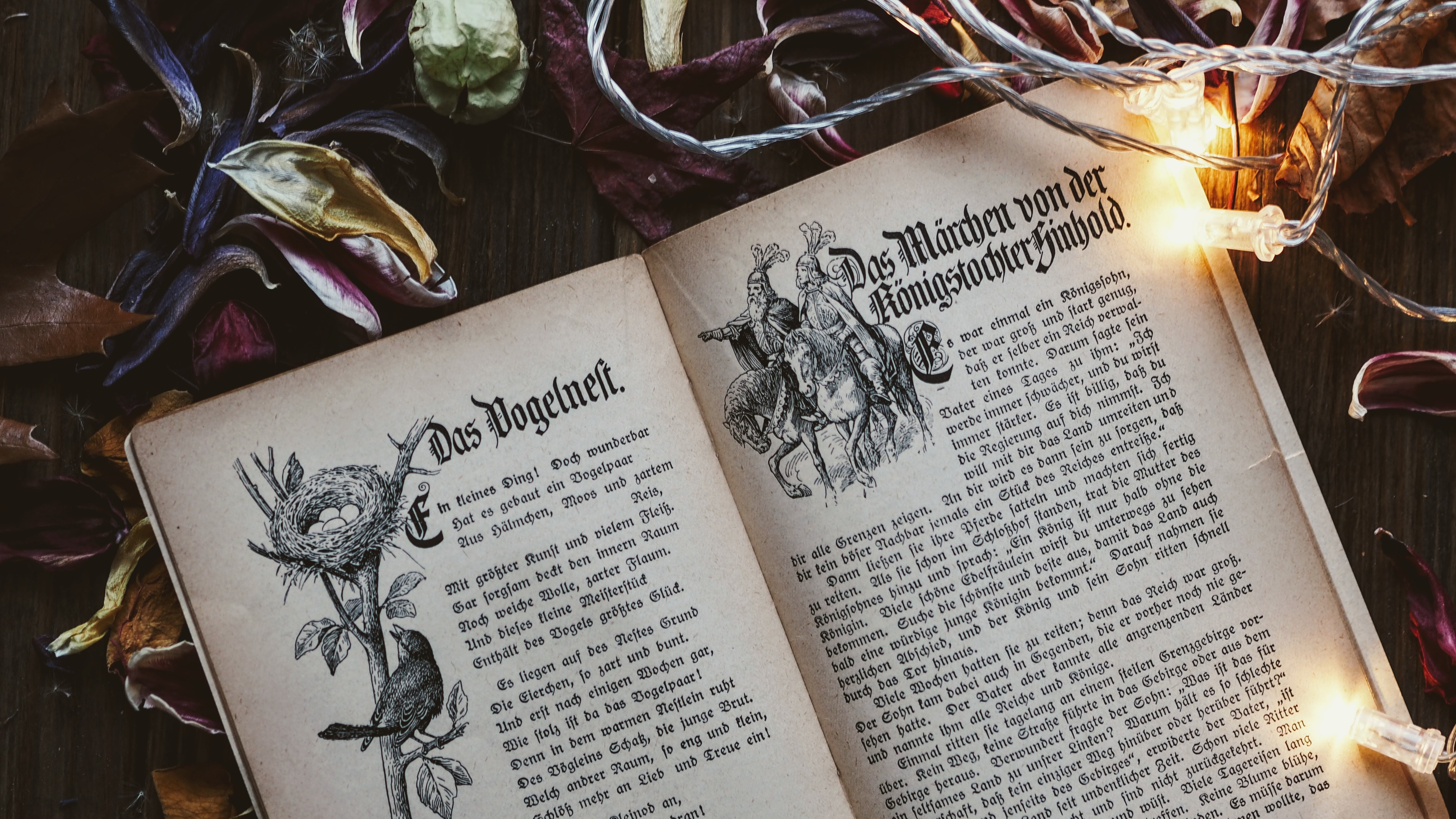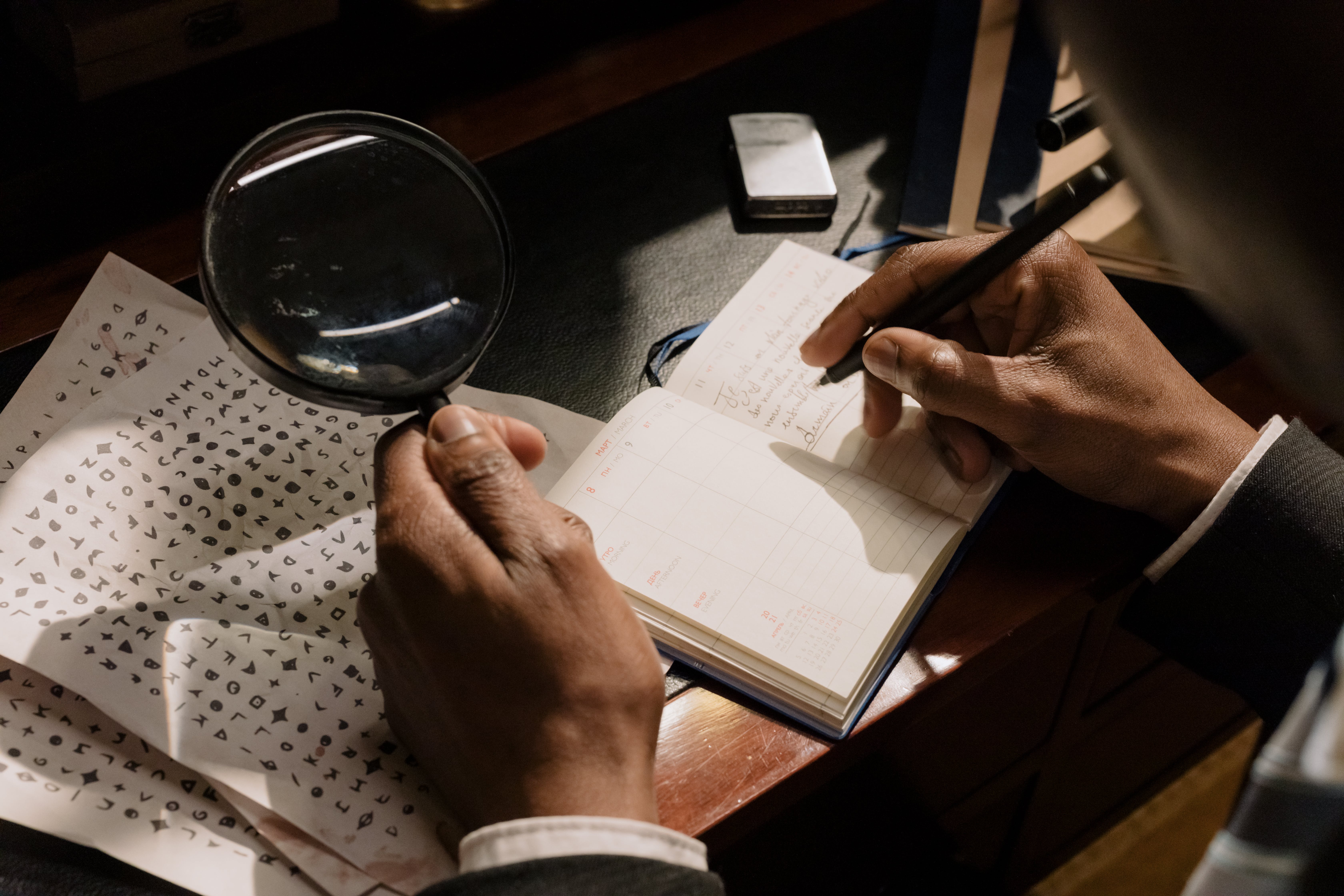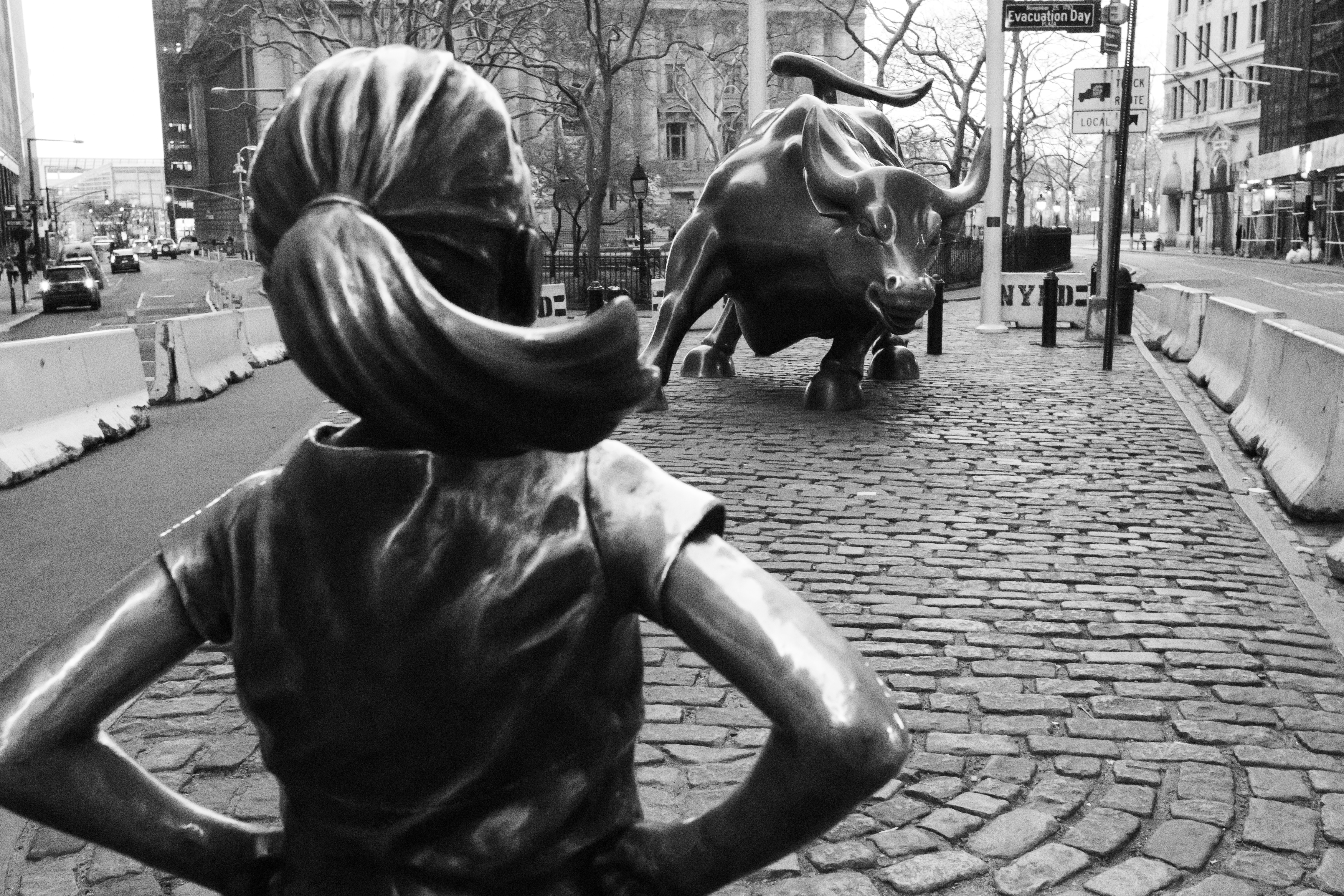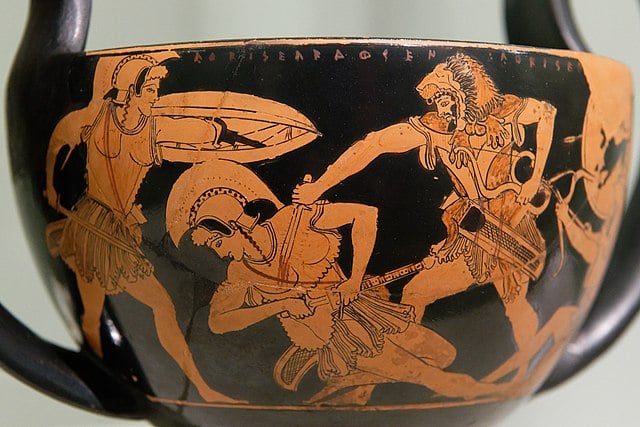Is the voice of a typical marketing campaign masculine, or feminine? What about its structure? Its point of view?
These might seem like strange questions. After all, we may not think much about the role of gender in marketing outside of choosing our target demographics.
But, in fact, looking closely at common marketing practices with gender in mind leads to some surprising insights—and can help us craft exciting, unexpected campaigns.
In this article, we’ll be using ideas from feminist narratology to uncover the “masculine” biases embedded in the structure of many marketing messages, identify alternative approaches to communication found in women’s storytelling, and explore how marketers might apply “feminine” storytelling techniques to create memorable, moving work.
Marketing with The Hero’s Journey
Think of the last advertisement you saw. Chances are, it featured:
- A protagonist
- A problem
- A product or service, which the protagonist used to solve that problem
Sick patients defeat anthropomorphized globs of mucus with cough medicine. Creative trailblazers overcome conformity with fancy computers. And so on.
This story structure—a lone individual beating a problem with the help of a special object—aligns with Joseph Campbell’s Hero’s Journey, a narrative structure which he believed was at the heart of every great story ever told. Many of our culture’s favorite stories—Star Wars, The Lord of the Rings, etc.–do in fact fit this pattern.

Given the popularity of this story structure, it makes sense that marketers would put it to work in their own campaigns. Indeed, the Hero’s Journey is a key part of our own storytelling framework here at Free Range.
But, as we’ve written about before, the Hero’s Journey is not actually as universal as Campbell believed. In his quest to create a singular theory of storytelling, Campbell erased important differences between the ways stories operate in different cultures, applying a White, male, Western framework that divorced many of his example stories from their original contexts.
As it turns out, marketing campaigns grounded in the Hero’s Journey can share many of the same biases.
“Masculine” Marketing
The target of a typical marketing message is the “consumer”—a free individual who can use economic power to make changes in his life.
Historically speaking, people with this kind of freedom are rare.
For most of human history, the vast majority of people have not had the political or economic freedom to pick and choose among options. Women, in particular, have been forced through violence and coercion to accept men’s decisions about their bodies, livelihoods, and more across time and cultures.
Most women, most of the time, have not had the ability to act as free agents pursuing their own goals.
Marketing messages directed at “consumers” would have seemed utterly bizarre to most women at most points in history. The “plot” of a typical marketing message—"pick this product and change your life!”—would have had no relevance to them.

In her seminal 1986 essay “Toward a Feminist Narratology”, comparative literature scholar Susan S. Lanser points out that much male-oriented storytelling assumes a level of freedom—an ability to “drive the plot”—that many women have never experienced. As a result, these stories—and narrative theories based exclusively on them—are inadequate to capture a key part of women’s experience. As she puts it:
“these theories of plot assume that textual actions are based on the (intentional) deeds of protagonists; they assume a power, a possibility, that may be inconsistent with what women have experienced both historically and textually, and perhaps inconsistent even with women’s desires.”
In other words, stories—and marketing campaigns—that assume freedom of action and speech for their protagonists don’t fully account for women’s experience of the world.
To safely tell their stories, women throughout the centuries have had to develop more roundabout approaches to communicating—with remarkable results.
“Double Voice”: Context and Subtext in Women’s Storytelling
Unable to speak freely and prevented from acting for themselves, women writers and storytellers throughout history have developed narrative strategies that utilize context, subtext, and the relationships between texts to communicate important information, push back on men’s definitions of womanhood, and advocate for themselves and others.
As Lanser puts it:
“the condition of being woman in a male-dominated society may well necessitate the double voice, whether as conscious subterfuge or as tragic dispossession of the self” (emphasis mine).
In other words, according to Lanser, women’s storytelling can often be marked by the ability—born out of necessity—to communicate more than one idea at a time. While the surface text may tell one story, the way in which that story is told—and its relationship to other stories—can embed whole new meanings into the narrative, complicating what might at first appear to be a simple tale.
Double Voice in Fairy Tales
In the years since Lanser’s article was published, other scholars have noted this feature of women’s storytelling as well.
In From the Beast to the Blonde, an in-depth study of women’s role in the development and spread of fairy tales, historian and novelist Marina Warner explores how women in the early modern period used the genre to defend their points of view and influence the young people in their care. She writes:
“Fairy tale offers a case where the very contempt for women opened an opportunity for them to exercise their wit and communicate their ideas: women’s care for children, the prevailing disregard for both groups, and their presumed identity with the simple folk, the common people, handed them fairy tales as a different kind of nursery, where they might set their own seedlings and plant out their own flowers.”

Women, in other words, used fairy tales to make the best of a bad situation.
If society demanded that women should entertain children with stories, then they would make sure those stories offered an alternative understanding of women to the one pushed by men. Fairy tales couldn’t openly challenge the status quo—but they could depict women as resourceful, clever, and even powerful in the face of difficult circumstances.
Women’s Writing
Women’s storytelling continued to employ the “double voice” as it made the transition from oral tales to written documents.
Lanser, for instance, cites an 1832 poem entitled “Female Ingenuity” as an example of the double voice in print. The poem, written from the point of view of a young woman describing her husband to a friend, at first appears to praise the man. A closer look, however, reveals that the poem contains a coded message.

By focusing on every other line, the reader discovers the hidden true story of the marriage—the husband, depicted as a saint in the surface text, is in fact a drunkard and an abuser who scrutinizes his wife’s letters before allowing her to send them.
As Lanser explains, this single poem thus communicates at least three distinct messages:
- The surface message, which the husband will read and be satisfied with,
- The hidden message, which will reach the wife’s friend, and
- The implied message to the reader in the real world, who is forced to confront the horror of the wife’s situation (and 19th century marriage in general), without being explicitly told to do so.
Through an awareness of the way that texts will be read in relation to each other, the author of the poem is able to express a far deeper story than would be possible in a more straightforward text—all while slipping it past the fictional husband’s censorship and challenging cozy ideas about marriage and the relationship between men and women.
Alias Grace and Double Voice
More recently, Canadian author Margaret Atwood makes use of double voice in her 1996 novel Alias Grace. The book focuses on Grace Marks, a housekeeper accused of murdering her employers in 1843. To tell her story, Atwood combines straightforward narration from Grace’s point of view with pieces of narration from her male doctor, sensationalized newspaper clippings about the murder, and snippets of poetry.
In her 2015 article “Feminist Narratology Revisited: Dialogizing Gendered Rhetorics in Alias Grace,” literary scholar Joan Douglas Peters argues that
“Grace’s style of narration (not her narrated story) is posited in dialogical opposition to the activity of other generic discourses in the novel, historic and fictional, all of which are represented performatively as parodies.”
Atwood, in other words, takes a different approach to the double voice than that used by the writer of “Female Ingenuity.” In Atwood’s novel, Grace—the female protagonist—is the only person who speaks plainly about her own experience and the world around her.
The other “discourses” presented in the novel are, by contrast, are full of blatant prejudice against women and disregard for truth. By putting them side by side with Grace’s straightforward narrative voice, Atwood “parodies” these discourses which depict women as weak-willed, hysterical, or immature, revealing the absurdities embedded in them.
The power of Alias Grace, in other words, comes from Atwood’s ability to make texts “speak” to each other and reveal greater truths than the individual texts could communicate alone. Neither Grace’s narration nor any of the surrounding texts make bold claims about the injustices of sexism—just the opposite. But by bringing them together, Atwood’s novel presents a damning condemnation of the ways in which men think and talk about women, revealing the hypocrisies at the core of many male-dominated discourses.
Applying Double Voice in Marketing Campaigns
Given that the double voice found in much women’s storytelling can tell such powerful, complex stories, how can we marketers use it to communicate messages that simply can’t fit in a straightforward narrative?
Perhaps the most well-known example of the double voice being used in a marketing campaign is sculptor Kristen Visbal’s iconic statue Fearless Girl, unveiled on Wall Street in 2017 directly opposite another famous statue, Arturo Di Modica’s Charging Bull.

While not typically remembered as a piece of brand storytelling, Fearless Girl was in fact commissioned by Wall Street asset manager State Street Global, as part of an ongoing “campaign to pressure companies to add more women to their boards.”
The statue was explicitly tied to the State Street Global brand by a plaque which read “Know the power of women in leadership. SHE makes a difference.” (SHE is the company’s NASDAQ ticker symbol.) Moreover, at the time of the statue’s unveiling, State Street Global also had plans to write letters to more than 3,500 companies, pressuring them to include more women on their boards.
Visbal’s artwork derived its meaning, not from the bronze statue of Fearless Girl itself, but from its deliberate placement across from Charging Bull. Long seen as a symbol of the power and aggressiveness of male-dominated Wall Street banks, Charging Bull is widely recognized as a visual shorthand for Wall Street itself.
By placing her own statue directly in front of Charging Bull, Visbal put these two “texts” in conversation with one another, creating meaning that wouldn’t be possible if Fearless Girl had been installed as a standalone piece.
While a number of feminist thinkers have criticized the political intent behind the piece, describing it as a symbol of weak “corporate feminism”, Fearless Girl nonetheless serves as an instance of the double voice in a marketing context—using the relationship between texts to tell a story that wouldn’t be possible with a single, straightforward text.
If we think deeply about the relationship between our own marketing messages and other cultural artifacts, what stories could we tell?

-1.png)


